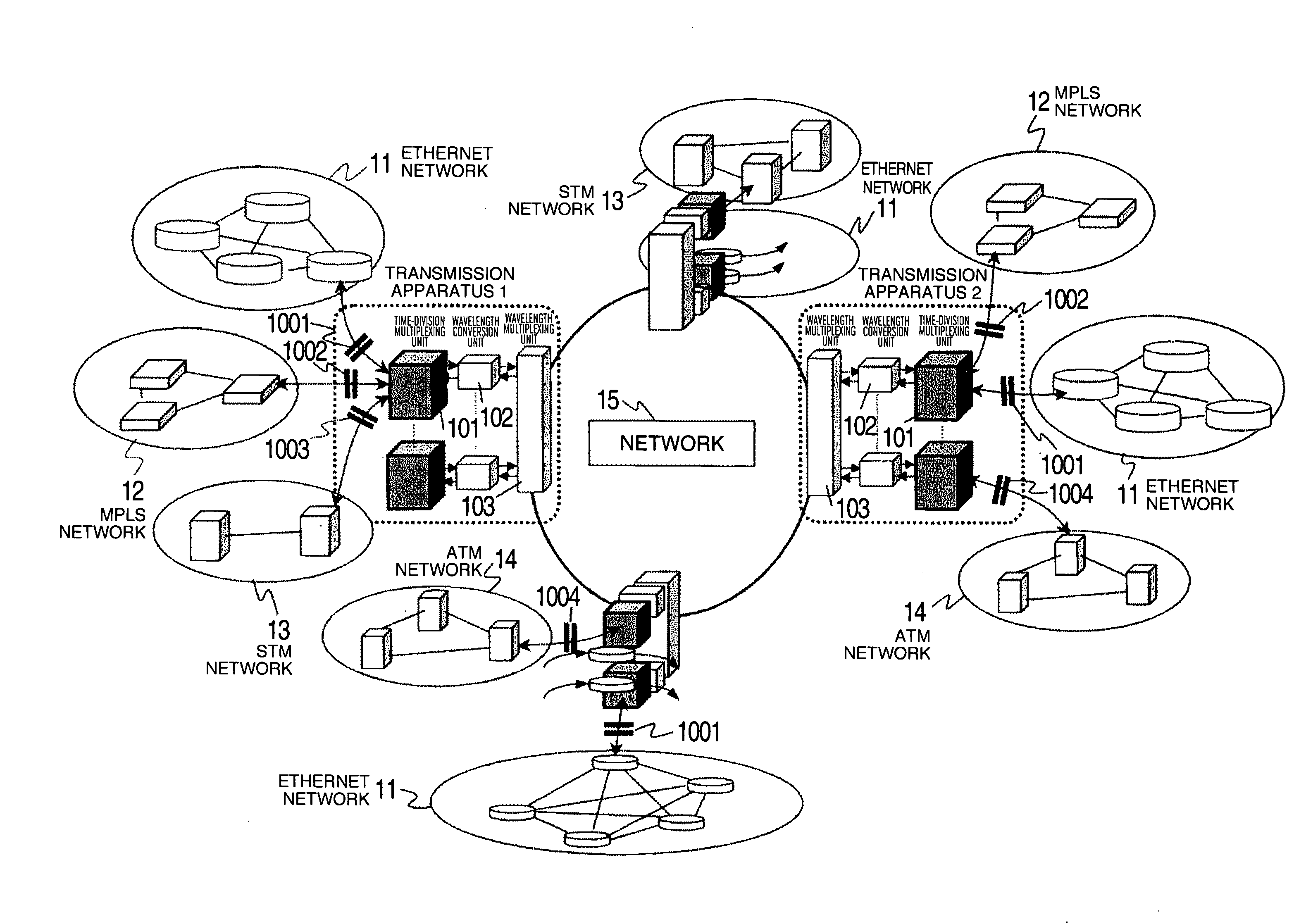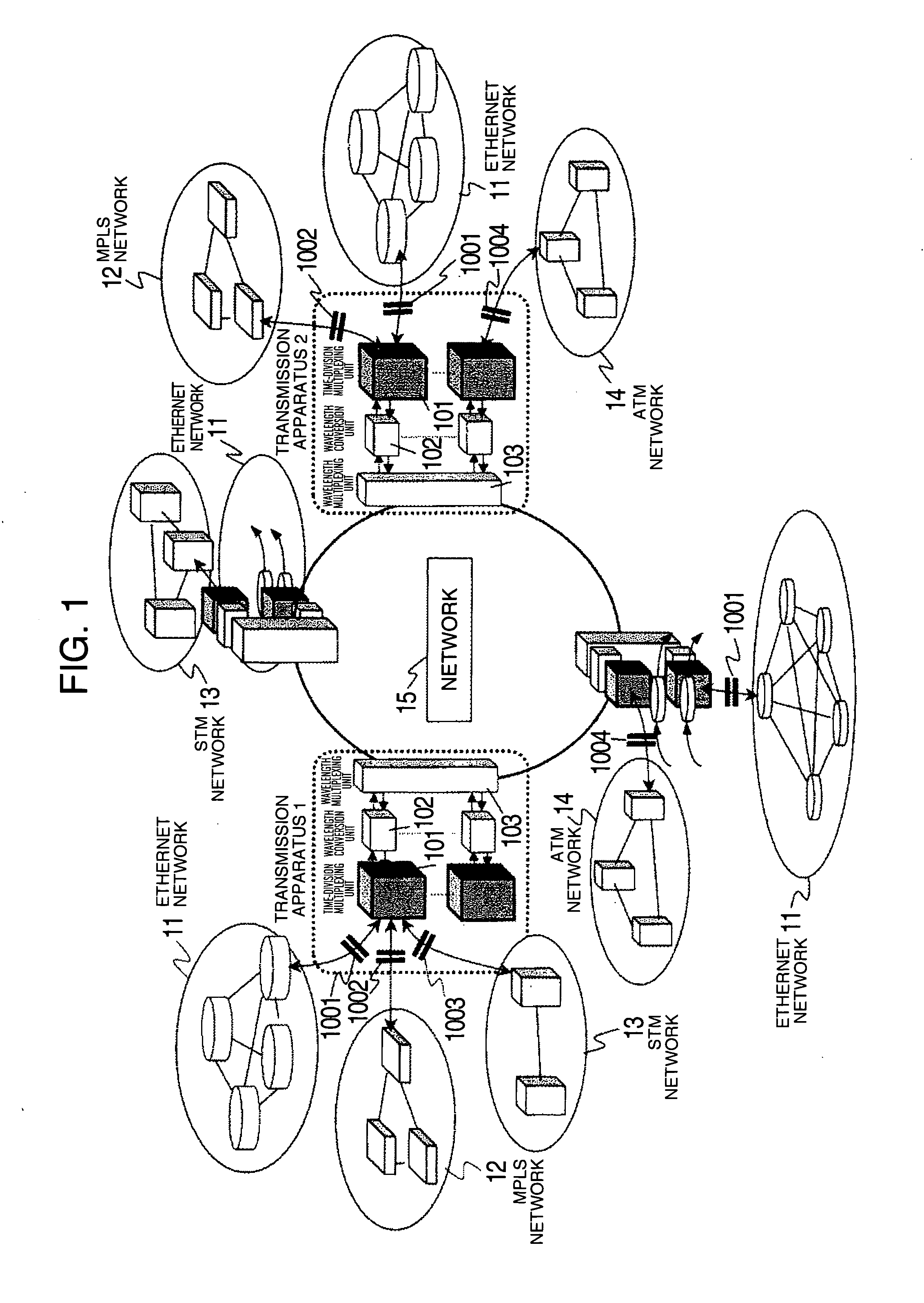Multiplexed optical signal transmission apparatus
a transmission apparatus and optical signal technology, applied in the field of transmission apparatus, can solve the problems of increasing the work amount of maintenance engineers, preventing the network b>15/b> from efficiently accommodating wan lines, etc., and achieve the effect of more flexibly and efficiently accommodating lines in transmission lines
- Summary
- Abstract
- Description
- Claims
- Application Information
AI Technical Summary
Benefits of technology
Problems solved by technology
Method used
Image
Examples
first embodiment
[0036]FIG. 3 shows the configuration of a transmission apparatus 40 in a first embodiment of the present invention. The transmission apparatus in the first embodiment comprises N optical modules 31-1 to 31-N that receive N low-speed signals 1-N 3000, which have different optical types, signal speeds, or frame formats, from WAN lines as optical signals, convert those optical signals to N electrical signals and send the converted signals to a multi-rate signal processing unit 32 or, conversely, receive N electrical signals from the multi-rate signal processing unit 32, convert the electrical signals to N optical signals, and send the low-speed signals 1-N 3000 to the WAN lines; the multi-rate signal processing unit 32 that can properly process N signals, which have different signal speeds and frame formats, in the multiplexing mode and the de-multiplexing mode independently according to the signal speeds or the frame formats in response to an operation mode setting instruction 3003 fr...
second embodiment
[0063]Although the operation mode selection instruction, optical module type information, signal type information, and bandwidth allocation setting instruction are uniquely determined for one type code in the first embodiment, they cannot be uniquely determined when the type code of an optical module corresponds to two or more signal types. A second embodiment of the present invention is applicable to such a case.
[0064]This embodiment will be described using a transmission apparatus for which an XFP type optical module is used and which has a multi-rate signal processing unit that can accommodate the following three types of signals that have completely different frame formats and signals speeds: STM-64 (signal speed: 9953.28 Mbits / s) defined by ITU-T G.707 and 10GBASE-R (signal speed: 10312.5 Mbits / s) and 10GBASE-W (signal speed: 9953.28 Mbits / s) defined by IEEE802.3.
[0065]FIG. 15 shows the configuration of the transmission apparatus in the second embodiment. For an optical module ...
PUM
 Login to View More
Login to View More Abstract
Description
Claims
Application Information
 Login to View More
Login to View More - R&D
- Intellectual Property
- Life Sciences
- Materials
- Tech Scout
- Unparalleled Data Quality
- Higher Quality Content
- 60% Fewer Hallucinations
Browse by: Latest US Patents, China's latest patents, Technical Efficacy Thesaurus, Application Domain, Technology Topic, Popular Technical Reports.
© 2025 PatSnap. All rights reserved.Legal|Privacy policy|Modern Slavery Act Transparency Statement|Sitemap|About US| Contact US: help@patsnap.com



